In today’s environmentally conscious world, the spotlight is increasingly turning towards sustainable alternatives, and renewable palm leaf products are emerging as a beacon of eco-friendliness. These innovative products not only offer functionality but also contribute significantly to the conservation of the environment.
Introduction to Renewable Palm Leaf Products
Renewable palm leaf products represent a beacon of sustainable innovation in today’s eco-conscious world. These products, derived from naturally fallen palm leaves, embody the essence of environmental friendliness and resource efficiency. Crafted through an eco-friendly process that ensures minimal ecological impact, these items have surged in popularity as an alternative to conventional disposable products.
The manufacturing process starts with the responsible collection of fallen palm leaves, eliminating the need for deforestation or harm to palm trees. These leaves undergo treatment and processing methods, preserving their natural integrity while transforming them into an array of eco-friendly items like plates, bowls, cups, and cutlery.
The essence of these products lies not only in their eco-friendliness but also in their robustness and versatility. Offering a sustainable alternative to plastic and paper-based products, renewable palm leaf items present a compelling solution to the global challenge of plastic pollution and environmental degradation.
Their rise in popularity reflects a collective shift in consumer preferences towards sustainable living. As more individuals and businesses opt for eco-conscious choices, the demand for these products has grown exponentially, marking a significant step towards a greener and more sustainable future.
The Eco-Friendly Nature of Palm Leaf Products
The eco-friendly nature of palm leaf products is a testament to their sustainability and minimal environmental impact. Derived from naturally fallen palm leaves, these products embody a harmonious blend of environmental consciousness and practicality.
The process of crafting palm leaf products begins with the collection of fallen leaves, ensuring no harm to the palm trees or additional stress on the environment. This sustainable sourcing method preserves ecosystems and minimizes carbon footprints, unlike traditional manufacturing processes that contribute to deforestation.
What sets palm leaf products apart is their innate biodegradability. Unlike plastic, which can persist in landfills for centuries, palm leaf items naturally decompose, reducing the burden on the environment. Their eco-friendly disposition aligns with the ethos of reducing waste and promoting a circular economy.
Moreover, these products offer remarkable durability without compromising on their eco-friendliness. They withstand various temperatures and are suitable for a wide array of uses, from serving food at events to everyday household purposes. Their robustness doesn’t come at the cost of environmental harm, making them an ideal choice for those seeking sustainable alternatives.
By choosing palm leaf products, consumers actively contribute to minimizing plastic pollution and supporting eco-friendly practices. This conscious decision reflects a commitment to a cleaner planet and a more sustainable future for generations to come.
Manufacturing Process of Palm Leaf Products
The manufacturing process of palm leaf products begins with the responsible collection of naturally fallen palm leaves. This sustainable approach ensures that no harm comes to the palm trees, preserving the ecosystem while gathering the raw material needed for production.
Once collected, the palm leaves undergo a meticulous treatment process. This treatment involves cleaning the leaves thoroughly to remove any impurities and ensuring they are hygienic for use in various applications. The leaves are then sanitized and shaped using heat and pressure, without the use of any chemicals or additives.
The processed leaves are molded into various forms, ranging from plates and bowls to cups and cutlery. These products retain the natural textures and patterns of the palm leaves, adding an organic and unique aesthetic appeal to each item.
What’s remarkable about this manufacturing process is its eco-friendliness. Unlike conventional manufacturing that relies on heavy machinery and synthetic materials, creating substantial environmental footprints, palm leaf product manufacturing is significantly more sustainable. It minimizes energy consumption and waste generation, aligning with the principles of eco-consciousness.
The result is a range of durable, biodegradable products that not only serve their purpose effectively but also contribute to reducing environmental degradation. By utilizing fallen palm leaves and employing eco-friendly processing techniques, the manufacturing process of palm leaf products exemplifies sustainability and responsible resource utilization.
Versatility and Applications of Palm Leaf Products
The versatility of palm leaf products knows no bounds, offering a wide array of applications that cater to both everyday needs and special occasions. Crafted from naturally fallen palm leaves, these products showcase remarkable adaptability and functionality.
In households, palm leaf products serve as practical and eco-conscious alternatives. From serving dishes to dinnerware, their sturdiness makes them ideal for daily use. They can handle a variety of foods, whether hot or cold, without compromising their structural integrity. Their natural texture and earthy appearance add a charming touch to table settings, enhancing the dining experience.
Beyond homes, the catering and events industry finds these products invaluable. Their robustness allows for easy handling during events, be it weddings, parties, or outdoor gatherings. Serving meals on palm leaf plates and using palm leaf cutlery not only adds an aesthetic appeal but also aligns with eco-friendly event practices.
Moreover, palm leaf products are gaining traction in the foodservice sector, including restaurants, food trucks, and cafes. Their versatility in serving various cuisines, coupled with their eco-friendly appeal, resonates with establishments aiming to reduce their environmental impact.
Beyond their use in the food industry, palm leaf products have found applications in diverse areas. They serve as elegant and eco-friendly packaging solutions for gifts and products, showcasing a commitment to sustainable practices.
Their adaptability, combined with their biodegradability, makes them a favorite among environmentally conscious consumers. From everyday use in homes to large-scale events and commercial settings, palm leaf products shine as versatile, eco-friendly solutions catering to a myriad of needs.
Advantages and Benefits of Using Palm Leaf Products
Using palm leaf products brings forth a multitude of advantages and benefits that align with both environmental sustainability and practical functionality.
- Eco-Friendly Nature: These products are crafted from naturally fallen palm leaves, ensuring no harm to trees or ecosystems. Their biodegradability means they break down naturally, minimizing environmental impact and reducing waste in landfills.
- Durability and Strength: Palm leaf products exhibit remarkable sturdiness, able to withstand a variety of temperatures and hold different types of food without compromising their structural integrity. This durability makes them suitable for various purposes, from daily household use to catering at events.
- Versatility in Usage: Whether serving hot or cold foods, palm leaf products offer versatile solutions. They can handle a range of cuisines and are suitable for microwave use, making them adaptable to diverse culinary needs.
- Aesthetic Appeal: Their natural textures and earthy tones add a rustic and organic charm to table settings and events, elevating the visual appeal of dining experiences.
- Chemical-Free: The production process typically avoids the use of chemicals or additives, ensuring that the products remain safe for use with food.
- Sustainable Choice: By opting for palm leaf products, consumers actively contribute to sustainable practices. They support the use of renewable resources and reduce dependence on plastic or non-biodegradable materials.
- Convenient Disposal: Once their use is complete, palm leaf products can be composted, further closing the loop in a sustainable waste management cycle.
- Social Impact: In addition to environmental benefits, the production and use of palm leaf products often support local communities involved in their manufacturing, providing economic opportunities.
Overall, the advantages of using palm leaf products span environmental, functional, and aesthetic dimensions. They offer a practical, sustainable, and visually appealing alternative to conventional disposable items, encouraging a shift towards eco-conscious consumer choices.
Challenges and Considerations
- Limited Availability: Despite their increasing popularity, palm leaf products might not be as widely available compared to traditional disposable items. This limited availability could pose challenges in certain regions or for specific product variations.
- Cost Considerations: In some cases, palm leaf products might have a higher initial cost compared to conventional disposable items. This factor could influence purchasing decisions for budget-conscious consumers or businesses.
- Moisture Sensitivity: Although durable, palm leaf products might be sensitive to prolonged exposure to moisture or liquids, which could affect their structural integrity over time.
- Storage and Shelf Life: Proper storage is essential to maintain the quality of palm leaf products. Factors like humidity and temperature can impact their shelf life and usability.
- Consumer Awareness and Education: Many consumers might not be familiar with palm leaf products or their benefits. Educating consumers about their usage, disposal, and environmental advantages is crucial for wider adoption.
- Sourcing and Production Standards: Ensuring sustainable and ethical sourcing of palm leaves, as well as maintaining high production standards without compromising on eco-friendliness, poses a challenge for manufacturers.
- Misconceptions and Myths: There could be misconceptions surrounding the durability, usability, or hygiene of palm leaf products that might deter potential users. Addressing these myths through clear and accurate information is important.
- Waste Management and Composting Facilities: While palm leaf products are biodegradable, the availability of composting facilities might vary in different areas, impacting their disposal and effective utilization as a sustainable waste management option.
Understanding these challenges and considerations is essential for both consumers and manufacturers. Addressing these issues through innovation, education, and sustainable practices can further enhance the adoption and benefits of palm leaf products in promoting a greener, more sustainable future.
Market Demand and Growth of Palm Leaf Products
The market demand for palm leaf products has been experiencing significant growth and traction, primarily driven by the global shift towards eco-friendly and sustainable alternatives.
The increased awareness and concern for environmental issues, particularly surrounding plastic pollution, have led consumers and businesses alike to seek greener alternatives. Palm leaf products have emerged as a favorable choice due to their eco-friendliness and versatility.
This rising demand is not limited to specific regions but has seen a global surge. Consumers are increasingly opting for palm leaf products in various sectors, including households, restaurants, catering services, and events. The hospitality industry, in particular, has shown considerable interest in these products for their eco-conscious customers.
Businesses are also responding to this growing demand by incorporating palm leaf products into their offerings. This has resulted in an expanding market, with new suppliers and manufacturers entering the industry to meet the escalating need.
The market growth of palm leaf products is further supported by various initiatives promoting sustainability and environmental conservation. Government regulations and policies advocating for reduced plastic usage have also bolstered the demand for eco-friendly alternatives.
Moreover, the positive reception of palm leaf products by consumers, driven by their durability, aesthetic appeal, and eco-friendly attributes, has contributed significantly to their market growth. As a result, forecasts indicate a continued upward trajectory for the market demand for palm leaf products in the coming years.
The escalating demand and market growth for palm leaf products not only reflect a shift in consumer preferences but also signify a broader movement towards sustainable and responsible consumption practices. This trend is poised to drive further innovation and expansion within the industry, offering promising prospects for the widespread adoption of eco-friendly alternatives in various markets worldwide.
Sustainable Impact of Palm Leaf Products
- Reduced Environmental Footprint: Palm leaf products stem from naturally fallen leaves, bypassing the need for deforestation or chemical-intensive production processes. This sustainable sourcing method minimizes environmental disturbances and reduces carbon footprints.
- Biodegradability and Circular Economy: Unlike non-biodegradable materials like plastics, palm leaf products decompose naturally, contributing to a circular economy by returning to the earth without leaving lasting traces in landfills. This biodegradability aligns with sustainable waste management practices, reducing environmental pollution.
- Conservation of Resources: By utilizing fallen palm leaves that would otherwise go to waste, these products make efficient use of resources and reduce the need for virgin materials. This conservation of resources fosters a more sustainable approach to manufacturing and consumption.
- Promotion of Sustainable Practices: The adoption of palm leaf products encourages eco-conscious choices among consumers and businesses. It serves as a tangible example of sustainable alternatives, inspiring individuals and industries to reevaluate their consumption habits and opt for environmentally friendly options.
- Support for Local Communities: The production and utilization of palm leaf products often involve local communities, providing economic opportunities and supporting livelihoods in regions where palm leaves are abundant. This social aspect contributes to sustainable development by fostering community engagement and empowerment.
- Conscious Consumerism and Education: Palm leaf products prompt consumers to consider the environmental impact of their choices. This awareness leads to informed decision-making, encouraging a shift towards sustainable and responsible consumerism. Education about the benefits of these products further amplifies their sustainable impact.
In essence, palm leaf products epitomize sustainable practices by aligning with principles of environmental conservation, resource efficiency, and responsible consumption. Their ripple effect extends beyond their immediate use, influencing attitudes and behaviors towards a more eco-friendly and sustainable future.
Comparison with Other Eco-Friendly Alternatives
- Biodegradability: Palm leaf products stand out for their natural biodegradability, breaking down organically and swiftly compared to some alternatives like bioplastics or bamboo products, which might take longer to decompose.
- Material Source and Processing: Palm leaf products utilize fallen leaves, avoiding the need for resource-intensive cultivation or extensive manufacturing processes seen in bamboo or wood-based alternatives. This sustainable sourcing minimizes environmental impact.
- Durability and Functionality: While bamboo products offer durability, palm leaf items often surpass in terms of sturdiness and resistance to heat and liquids. They are often more robust for single-use purposes compared to some biodegradable plastics.
- Aesthetic Appeal: Palm leaf products retain a natural, rustic aesthetic, distinct from the uniform appearance of some bioplastics or paper-based alternatives. This unique appearance adds an organic charm to table settings or events.
- Eco-Friendliness of Production: The production of palm leaf products generally involves minimal processing and avoids the use of chemicals or additives, enhancing their eco-friendliness compared to some bioplastics that may require complex manufacturing procedures.
- Consumer Perception and Acceptance: Palm leaf products are increasingly gaining consumer acceptance due to their natural origin and eco-friendly attributes. This consumer perception contributes to their popularity as a sustainable choice.
While each eco-friendly alternative has its merits, palm leaf products excel in their blend of natural origin, durability, and minimal environmental impact throughout their lifecycle. Their unique attributes position them as a compelling and eco-conscious choice in the spectrum of sustainable alternatives available.
Innovations and Future Prospects
- Technology Integration: Ongoing research focuses on integrating technology into the production process of palm leaf products. This integration aims to enhance efficiency, reduce waste, and optimize resource utilization without compromising their eco-friendly nature.
- Advanced Processing Techniques: Innovations in processing methods seek to refine the treatment of palm leaves, ensuring greater consistency in product quality and expanding the range of products that can be created from this renewable resource.
- Diversification of Product Range: Future prospects include diversifying the portfolio of palm leaf products to cater to a wider array of needs and preferences. This expansion might include innovative designs, shapes, and functionalities for various applications.
- Biocomposite Development: Exploration into the development of biocomposites using palm leaf fibers holds potential for creating more robust and versatile materials for construction, packaging, or other industries, further expanding their utility.
- Enhanced Sustainability Standards: Continuous efforts to elevate sustainability standards in sourcing, production, and distribution aim to reinforce the eco-friendly nature of palm leaf products. This includes ensuring ethical sourcing practices and reducing the carbon footprint at every stage.
- Global Market Penetration: As awareness grows and consumer preferences shift towards sustainable alternatives, the future holds opportunities for increased global market penetration of palm leaf products, reaching a wider audience across diverse sectors and geographies.
- Collaboration and Partnerships: Collaborative efforts among industry players, researchers, and environmental advocates foster innovation and knowledge-sharing, driving forward sustainable practices and advancements in palm leaf product development.
In essence, the future of palm leaf products is marked by continuous innovation, technological enhancements, and a commitment to sustainability. These advancements hold the potential to not only expand the range of eco-friendly alternatives available but also contribute significantly to a more environmentally conscious and sustainable world.
Consumer Awareness and Education
- Informative Campaigns: Initiatives aimed at raising awareness through informative campaigns, both online and offline, can highlight the eco-friendly nature, biodegradability, and versatility of palm leaf products. These campaigns can illustrate their positive impact on the environment and encourage eco-conscious choices.
- Clear Communication: Providing clear and concise information about the sourcing, production process, and disposal methods of palm leaf products is essential. Transparent communication helps consumers make informed decisions based on their environmental values.
- Demonstration and Samples: Offering demonstrations or providing samples at events, in stores, or through online platforms allows consumers to experience the quality, functionality, and aesthetics of palm leaf products firsthand. This tangible experience can influence their perception positively.
- Online Resources and Guides: Creating online resources, guides, or FAQs detailing the usage, care instructions, and disposal practices of palm leaf products can serve as valuable references for consumers seeking information.
- Partnerships and Collaborations: Collaborating with retailers, influencers, environmental organizations, and educational institutions can amplify the reach of educational initiatives. Partnerships can facilitate broader dissemination of information and promote sustainable practices.
- Engagement and Interaction: Encouraging engagement through social media platforms, forums, or community events fosters conversations around sustainability and palm leaf products. Interactive sessions allow consumers to ask questions and share experiences, building a community around eco-friendly choices.
- School and Community Programs: Integrating education about sustainable alternatives, including palm leaf products, into school curriculums or community programs cultivates awareness and instills environmental consciousness in younger generations.
By empowering consumers with knowledge about the environmental benefits, practical uses, and ethical considerations of palm leaf products, awareness and education initiatives create a pathway for conscious consumerism. This, in turn, contributes significantly to the widespread acceptance and adoption of these sustainable alternatives.
Testimonials and Case Studies
Testimonials and case studies showcasing the real-life experiences and positive impact of palm leaf products play a pivotal role in reinforcing their credibility and encouraging broader adoption. These personal accounts and documented success stories serve as compelling narratives for consumers, businesses, and communities.
- Consumer Testimonials: Collecting and sharing testimonials from individuals who have used palm leaf products can highlight their satisfaction, reliability, and the seamless integration of these products into their lifestyles. Personal experiences often resonate with potential consumers, influencing their purchasing decisions.
- Business Success Stories: Case studies highlighting businesses that have incorporated palm leaf products into their operations can demonstrate the practicality and advantages of these items. This includes showcasing how these products align with their sustainability goals, customer preferences, and operational efficiency.
- Event and Catering Experiences: Documenting the use of palm leaf products in events, catering services, or hospitality settings can illustrate their suitability for large-scale applications. Testimonials from event organizers, caterers, or hospitality professionals can underscore the practicality and positive reception of these products.
- Community Impact: Highlighting the positive impact of using palm leaf products in local communities can emphasize their role in supporting sustainable livelihoods and fostering environmental stewardship. Stories of how these products benefit communities, especially in regions where palm leaves are abundant, can resonate deeply.
- Before-and-After Scenarios: Comparing the environmental impact and user experiences before and after adopting palm leaf products can offer a compelling narrative. This visual representation of positive change serves as a persuasive tool for broader acceptance.
- Media Features and Reviews: Encouraging media features or reviews from reputable sources further validates the effectiveness, quality, and eco-friendliness of palm leaf products. These endorsements can enhance credibility and reach a wider audience.
- Social Media Advocacy: Leveraging social media platforms to share user-generated content, including testimonials, photos, or videos of palm leaf products in use, encourages a community-driven approach and amplifies the positive narrative.
By leveraging testimonials and case studies, the positive impact and practical benefits of palm leaf products can be effectively communicated. These stories serve as authentic endorsements that resonate with diverse audiences, fostering trust and promoting the widespread adoption of these sustainable alternatives.
Conclusion
In conclusion, renewable palm leaf products offer a compelling solution to reducing plastic waste and promoting sustainable living. Their eco-friendly nature, versatility, and positive impact on communities and the environment make them an ideal choice for conscientious consumers.

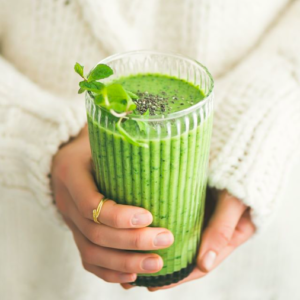



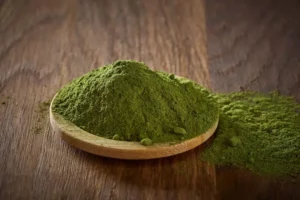




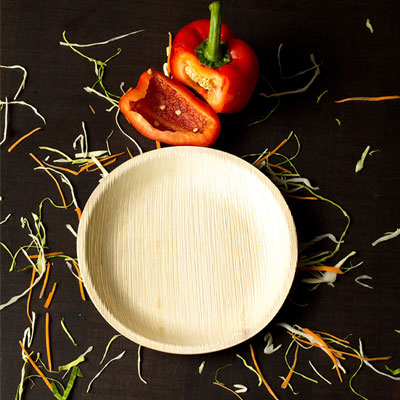
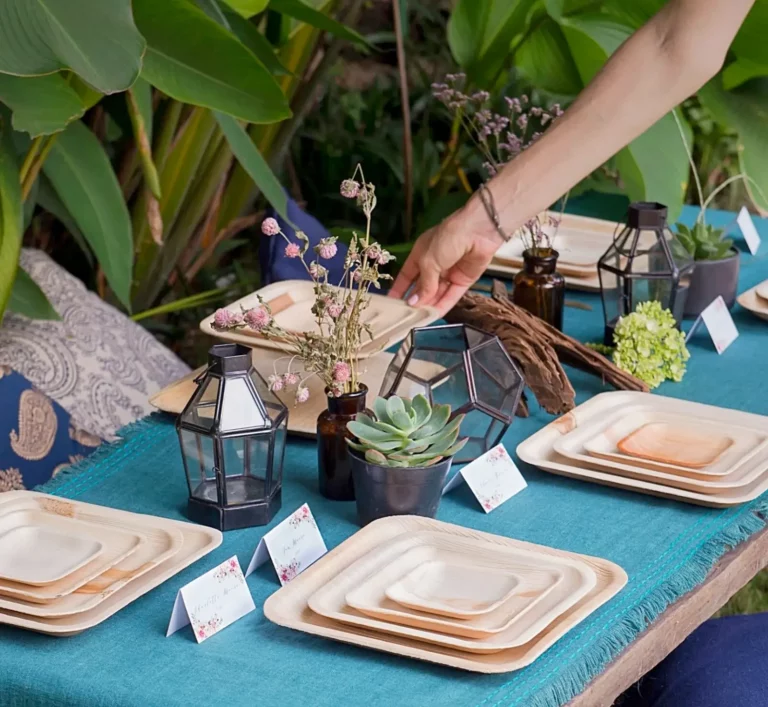

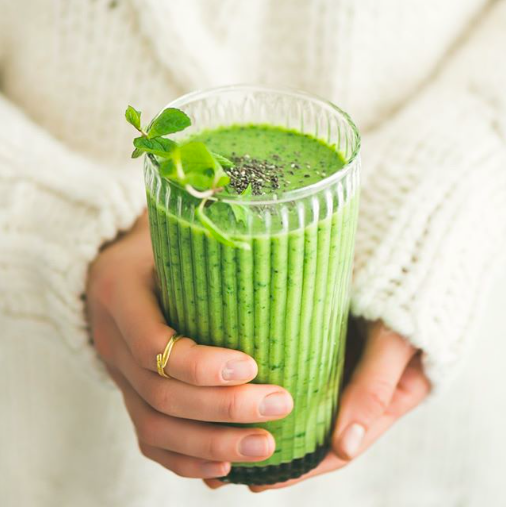

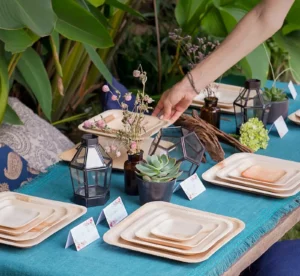





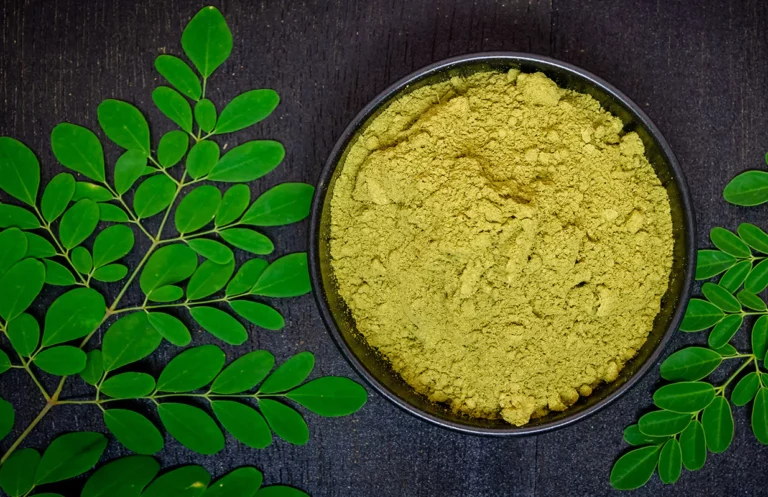
+ There are no comments
Add yours